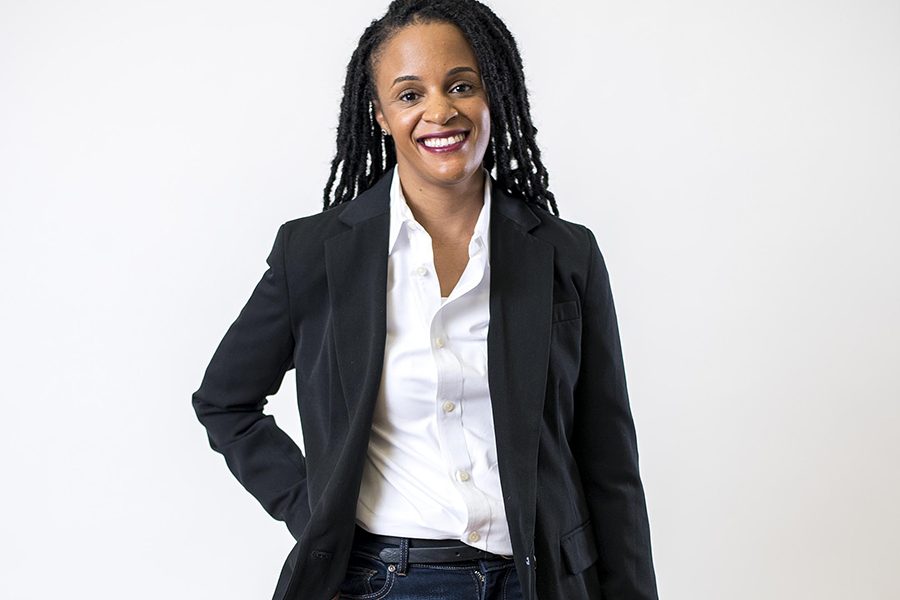History & Politics
Lisa Snowden-McCray Discusses Starting the Baltimore Beat
The alt-weekly's editor-in-chief talks about the local media landscape.
You moved to The Sun after it was announced they were closing the City Paper. Then you jumped back into the alt-weekly world with the Beat?
Brandon Soderberg (former City Paper editor and new Beat managing editor) hustled for months to find a purchaser for the City Paper or start something similar. When he finally found one, he said he wanted to turn it over to me. I didn’t jump. I had to think about it. The Sun was a stable job, I liked my co-workers—who do an amazing job—but we need more outlets in the city. It’s a gamble, but journalism is a gamble everywhere these days.
You’ve said the Beat will not be City Paper 2.0.
There was really nothing wrong with the City Paper. Other than the behind-the-scenes business decisions. People still loved the product. What is a priority to me, is to keep pushing to get new voices into the paper, and give people a platform for stories that aren’t being told anywhere else.
Ultimately, Baltimore resident Kevin Naff and Brown Naff Pitts Omnimedia, which publishes the Washington Blade, the oldest LGBT newspaper in the country, stepped up as publisher.
The Blade runs like clockwork. The fact that Kevin believes we can make money—he wouldn’t invest his money otherwise—is important. The Blade, in D.C., got ad calls the first day the launch of the Beat was announced. We’ll share resources—printing, circulation, sales, marketing—as well as some edit and photography coverage. The Blade has been breaking LGBT stories in Baltimore for years.
You’re starting with a full-time edit team of three—City Paper had 10. That’s tough.
It’s daunting, but not new. Ever since I’ve been a journalist, we’ve had to learn how to do more with the less. Brandon [Soderberg], arts and culture editor/deputy Maura Callahan, and myself will be doing a lot of writing, initially. [Former City Paper editor] Baynard Woods and the Real News Network, whose downtown building we use, will contribute. We also have a small freelance budget.
What about your online presence?
We will put everything on our website Tuesday night before the print issue comes out. And we’re planning to partner with some local podcasts and Dr. Kaye Whitehead [Loyola University professor of communications and African-American studies], who has a daily show working with WEAA. We will try a lot of different things. The way I operate is that I try to steal from everybody, figure it out, and make it my own.
Where do you see the Beat fitting in the city’s news landscape?
We can’t compete with The Sun in breaking daily news. But I think there are a lot of smaller places such as the Baltimore Brew, the Afro, Baltimore magazine—though not small as those others—that make up the journalism ecology in the city. I think there is room for us in that ecology. The fact that we are getting press releases and story pitches already shows me there is space for us.
What City Paper items are migrating to the Beat, in terms of content? You mentioned Baynard Woods—I’m assuming you were referencing his “Democracy in Crisis” column?
Yes. His column. Also [UMBC professor] Kate Drabinski’s “Field Tripping” column. We won’t have the “Power Rankings,” but something similar. Baynard and Brandon will continue to do weed reviews. Our arts and events calendar was really important to readers and Maura will continue to produce a comprehensive, diverse music and arts calendar, but it will be more curated. We intend to do long-form, investigative cover stories. I wish we could bring [former City Paper photo editor] Joe Giordano over to the Beat, but we can’t afford a full-time photo editor to start.
Where can we find the Beat? The Sun has repurposed the old City Paper news boxes for its new weekend entertainment paper.
I do want to say that we feel it is important to have a print issue because not everyone in this city has a smartphone with an unlimited data plan or regular WiFi access. And we do want to push into parts of West and East Baltimore that traditionally have been left out in the past. Boxes are very expensive, so you can find us in small businesses, convenience stores, libraries, gyms—anywhere else they’ll let us [distribute], basically—across the city.
